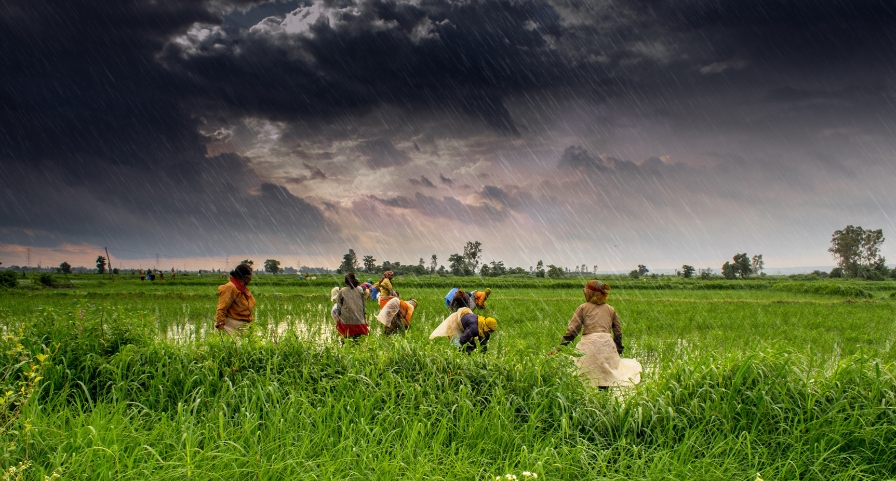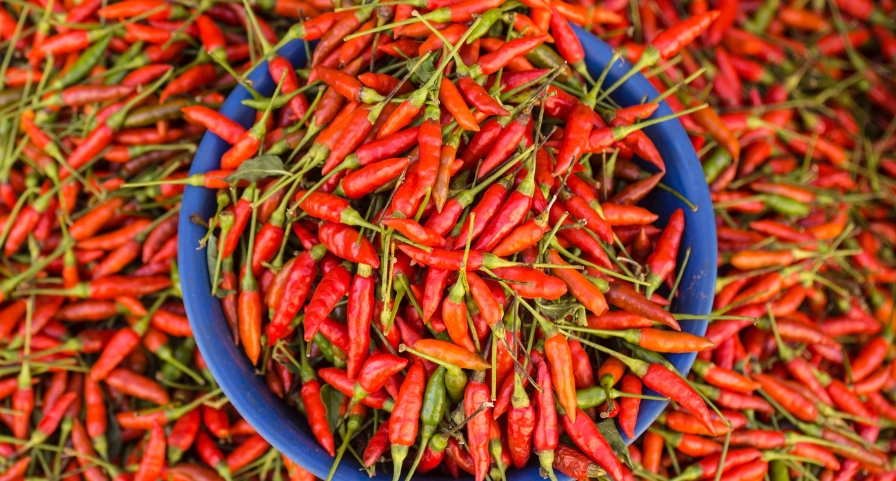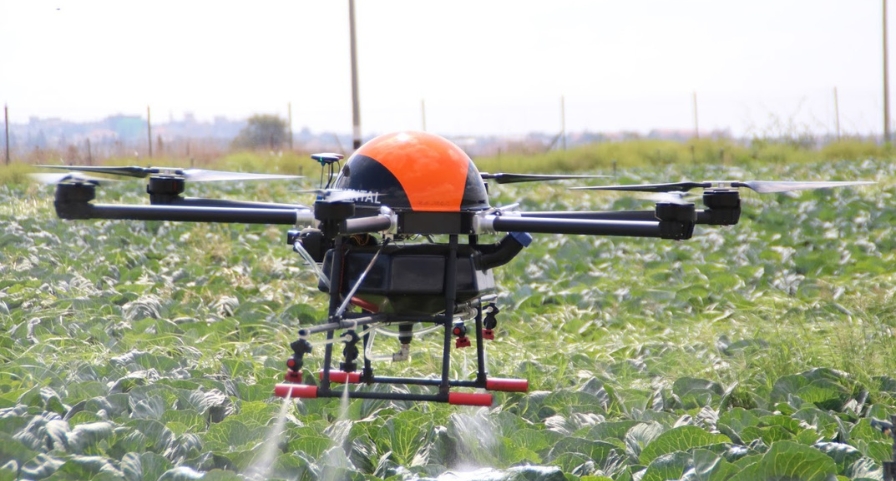Over 70% of the rural households in India depend on agriculture as their principal means of livelihood and globally India ranks second in terms of agricultural output. Along with fisheries and forestry, it accounts for one-third of the country’s GDP. Therefore, any change in this domain – for instance, the introduction of agritech solutions in this sector – is likely to have a monumental social and economic impact.
The future of farming in India lies in combining grassroots knowledge with smart technology.
How is agritech changing fortunes?
Telangana’s Saagu Bagu is a case in point. The pilot project, conducted in collaboration with the World Economic Forum and the Government of Telangana, provided four AI-enabled apps to around 7,000 chilli-growing smallholder farmers.

In just one season, the farmers recorded a 21% increment in yields and almost 10% reduction in expenses incurred on fertilisers and pesticides. The farmers also ended up earning a whopping $800 more per acre per crop. From productivity to profitability, the AI apps helped the chilli farmers bag a bounty.
Recently, the Uttar Pradesh government collaborated with Google Cloud to launch the Open Network for Agriculture (UP-ONA). It uses voice commands in multiple languages and gives the farmers access to climate advisories and pest outbreak alerts to enable them to make data-driven decisions. Pilot projects under the collaboration have reported productivity gains of up to 25% due to improved market linkages and rapid response to on-field challenges.
Agricultural practices in India have been evolving from traditional, experience-based methods to more data-driven, sustainable approaches, according to Maria Jenita, a food technologist and the founder of Tamil Nadu-based Goodness Farms, which works with over 38 farmers practising organic farming.
“At Goodness Farms, we’ve seen how tech, from soil sensors to precision irrigation, can significantly improve yields while conserving resources.
The future of farming in India lies in combining grassroots knowledge with smart technology,” says Jenita.
Also read: IIT helps tech behind cold-pressed oil be light-weight, affordable
Nearly 4000 agritech start-ups revolutionizing India’s farming
The need for AI enablement in Indian agriculture is indeed crucial, considering that climate change is likely to lead to a 10-40% decrease in key crop yields in India by 2080. The estimate, by Indian Council for Agricultural Research, is unsettling to say the least. While that may be an estimate, we know for a fact from UNEP that each year India loses more than 70 million tonnes, or roughly 22% of the foodgrain output.

It is precisely why integrating tech and agriculture in a country such as India presents tremendous opportunities to scale up. In a global market worth $350 billion, the combined revenue of all agritech start-ups in India is just around $100 million. Estimates suggest that there are anywhere between 1500 to 4000 agritech startups in India currently that are revolutionising India’s farming ecosystem.
Startups such as WayCool, Ninjacart, JumboTail, Ecozen, Intello Labs, and Crofarm are using data and technology to improve supply chain and storage efficiencies. Others, such as Dehaat and BigHaat are using analytics to provide farming products and services to farmers.
And then there are start-ups such as JFarm and Onefarmer catering to small and marginal farmers who cannot afford to buy farm equipment but can rent from others in their fraternity. Also serving the segment are startups such as JaiKisan, Eekifoods and Fasal which are adding value to the Indian agricultural ecosystem.
Government and academia – driven by purpose
The Government of India has been consistently leveraging digital technologies to enhance productivity, efficiency, and sustainability in India’s agricultural sector. Apart from the Digital Agriculture Mission with a Rs 2,817 crore outlay, six other major schemes have been approved with an outlay of Rs 14,235 crore.

Also read: From fields to skies: Rural women soar with drone training
As part of its lab to land program, the government has released 109 high-yielding, climate resilient and biofortified varieties of crops and launched an AI-based National Pest Surveillance System that connects farmers directly with scientists to help them in identifying pests and other crop diseases simply by uploading pictures of their crops from their mobile phones.
Seminal innovation is taking place in academia as well. A majority of the IITs also have AgriHubs that are essentially tech-driven multi-institutional collaborative facilities.
Jenita, for instance, cites the example of the Solar-Biomass Hybrid Dryer developed at Tamil Nadu Agricultural University, which facilitates efficient drying of agricultural produce, reducing post-harvest losses and enhancing product quality.
“This innovation exemplifies how research institutions like TNAU are leveraging technology to address practical challenges in agriculture, promoting sustainability and profitability,” adds Jenita.
The last mile market gap
Despite the big role tech plays in ensuring food security, supply chain efficiency, and climate change mitigation, several challenges remain in terms of execution. Chief amongst them is the fact that 82% of farmers in India are small or marginal, hardly earning $1500 a year.

30-year-old Sanjay Topno, a barely literate farmer from Jharkhand’s Simdega village belongs to this cohort. He neither has the ability nor the desire for such AI-driven solutions. “I’ve watched some of these experiments on YouTube. They’re fun to watch… They’re like magic. But I don’t know how much they cost or how to get them. I can barely afford to even hire a tractor to mow the land. So, such tech solutions are beyond my imagination,” he shares.
How tech bridges such gaps is what will define the future of Indian agriculture. Something one will have to wait and watch.
Also read: The tech in the Tulsi mala
The lead image on top shows women farmers at work in a field. Farm mechanisation level in India is still very low, hovering around 40%. (Photo credit: Wikimedia Commons)
Kiran Yadav is a Delhi-based journalist.








